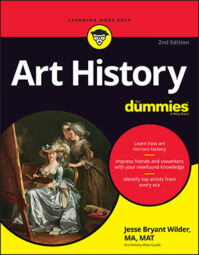Romanticism wasn't merely a visual-arts movement — it included poetry, fiction, and music. There were even Romantic philosophers! The fact that Romanticism was so widespread and diverse makes it hard to squeeze it into one definition.
Romanticism doesn't mean lying dreamy-eyed on a patch of clover or gazing wistfully into your lover's eyes. It doesn't refer to romance at all. It means being a staunch individualist, believing in the rights of other individuals, and expressing deep, intense, and often uplifting emotions — like Beethoven (whose Fifth Symphony marked the beginning of the Romantic era in music). Often, but not always, it means having a deep, spiritual relationship with nature. "Nature never did betray the heart that loved her," wrote the British Romantic poet William Wordsworth in "Tintern Abbey."
The most famous Romantic works of art are not paintings, poems, or symphonies, but three novels: The Hunchback of Notre-Dame and Les Misérables, both by the French writer Victor Hugo; and Frankenstein, by 18-year-old British writer Mary Shelley. All three works are outcries against man's inhumanity to man. To drive home the point, the writers magnify the inhumanity so we can see it better. They do this by directing it against outcasts: a hunchback, an ex-convict, and a manmade monster. The more of an outsider someone is, the more people abuse that person.The Romantic period was the first time in history that art focused on teaching people to care about each other. In this sense, Romanticism was "art with a heart." Romantic artists were also concerned with promoting individual liberty, ending slavery, and supporting democratic and independence movements, like the Greek war for independence from Turkey and the nationalism movement in Italy. To promote democracy in England, the Romantic poet Percy Bysshe Shelley (husband of Mary) said to his countrymen in "Song to the Men of England:"
Men of England, wherefore plough For the lords who lay ye low? Wherefore weave with toil and care The rich robes your tyrants wear?
The French painter Delacroix used his paintbrush to win support for the Greek struggle for independence against the Turkish Empire. His painting The Massacre at Chios broadcast the terrible price the Greeks were paying in their struggle for liberty (in 1822, the Turks massacred 42,000 inhabitants of the island of Chios and sold about 50,000 as slaves in North Africa), moving many Europeans to sympathize with the Greek cause. The British Romantic poet Lord Byron put down his pen to help out. He died in Greece from a fever in 1824. Today, Byron is a Greek national hero.
Besides trying to improve social and political conditions, many Romantics went on inward quests to find and express a higher, truer reality than the one that confronts us from day to day. These painters and poets became prophets of a new Romantic spirituality.
In "A Defense of Poetry," Percy Bysshe Shelley wrote: "The great secret of morals is Love; or a going out of our own nature. . . . A man, to be greatly good . . . must put himself in the place of another and of many others; the pains and pleasures of the species must become his own."
Many Romantics believed that there was a basic goodness in man buried under layers of socialization. The idea was largely born in the brain of Jean-Jacques Rousseau. In his influential book The Social Contract, he wrote, "Man is born free, and everywhere he is in chains."
Rousseau said man was naturally good and honest (innocent as a babe) and that society made him bad. His Social Contract started a "back-to-Eden" movement, and a lot of the Romantics got onboard. Rousseau's ideas spurred the cult of the noble savage (Tarzan is an early 20th-century example), the natural man, born in the wild and unpolluted by socialization. The noble savage was natural, good, honest, and free — just like Tarzan or Mowgli in The Jungle Book.
Originally, Romantic also meant the opposite of classical. Classical is calm, orderly, even serene, like the Venus de Milo. Romantic is wild — a painting or poem bursting at the seams with energy, meaning, and often intimations of something spiritual.

